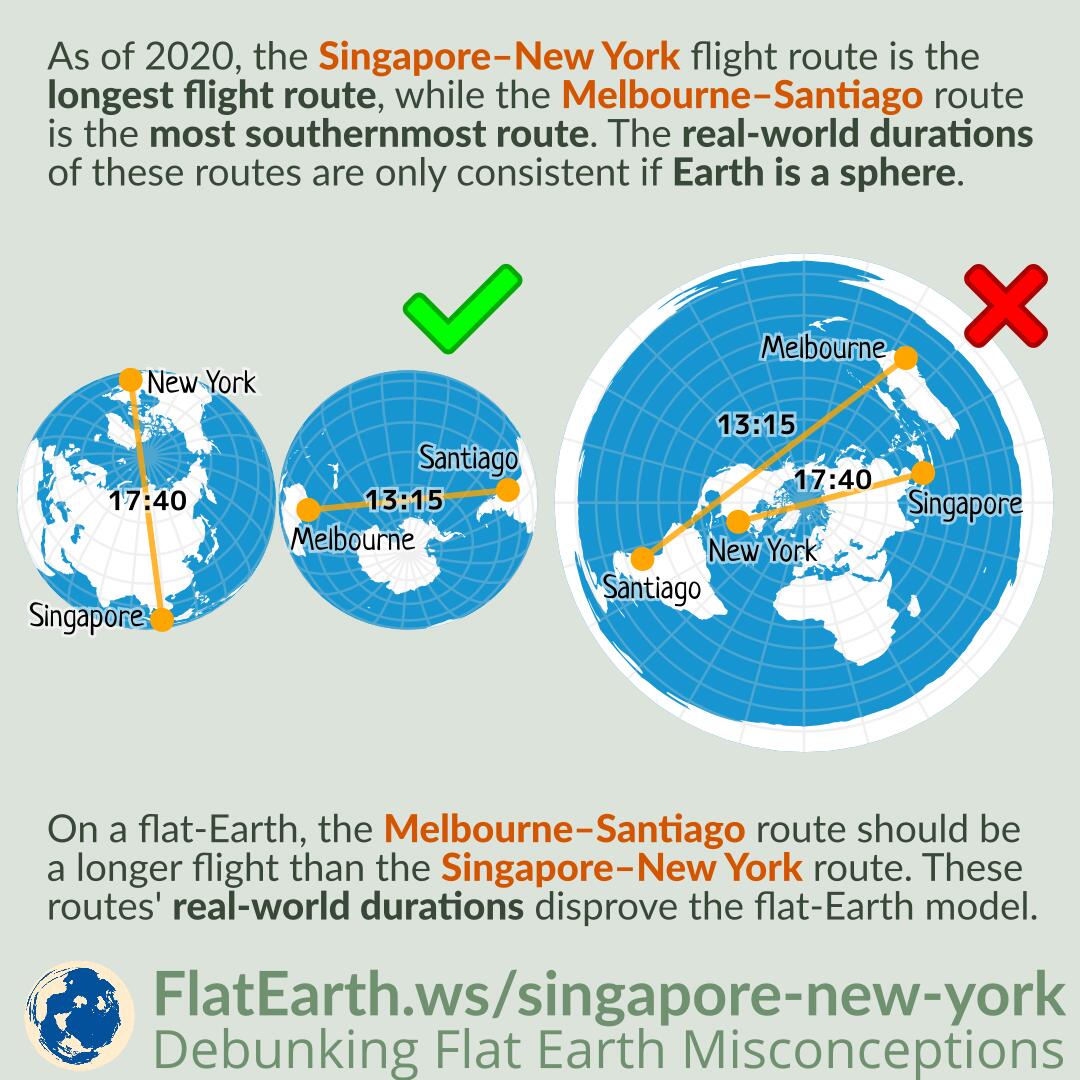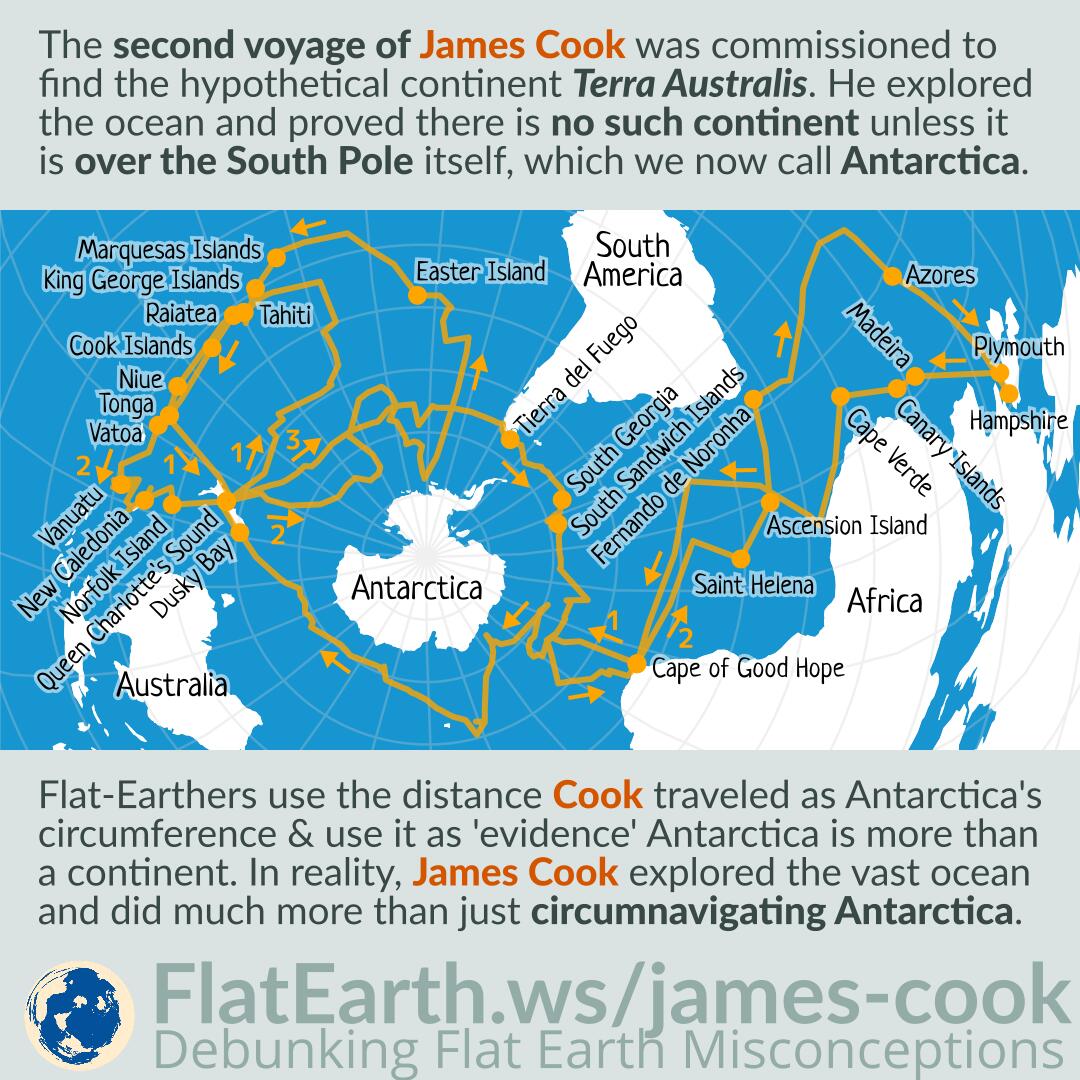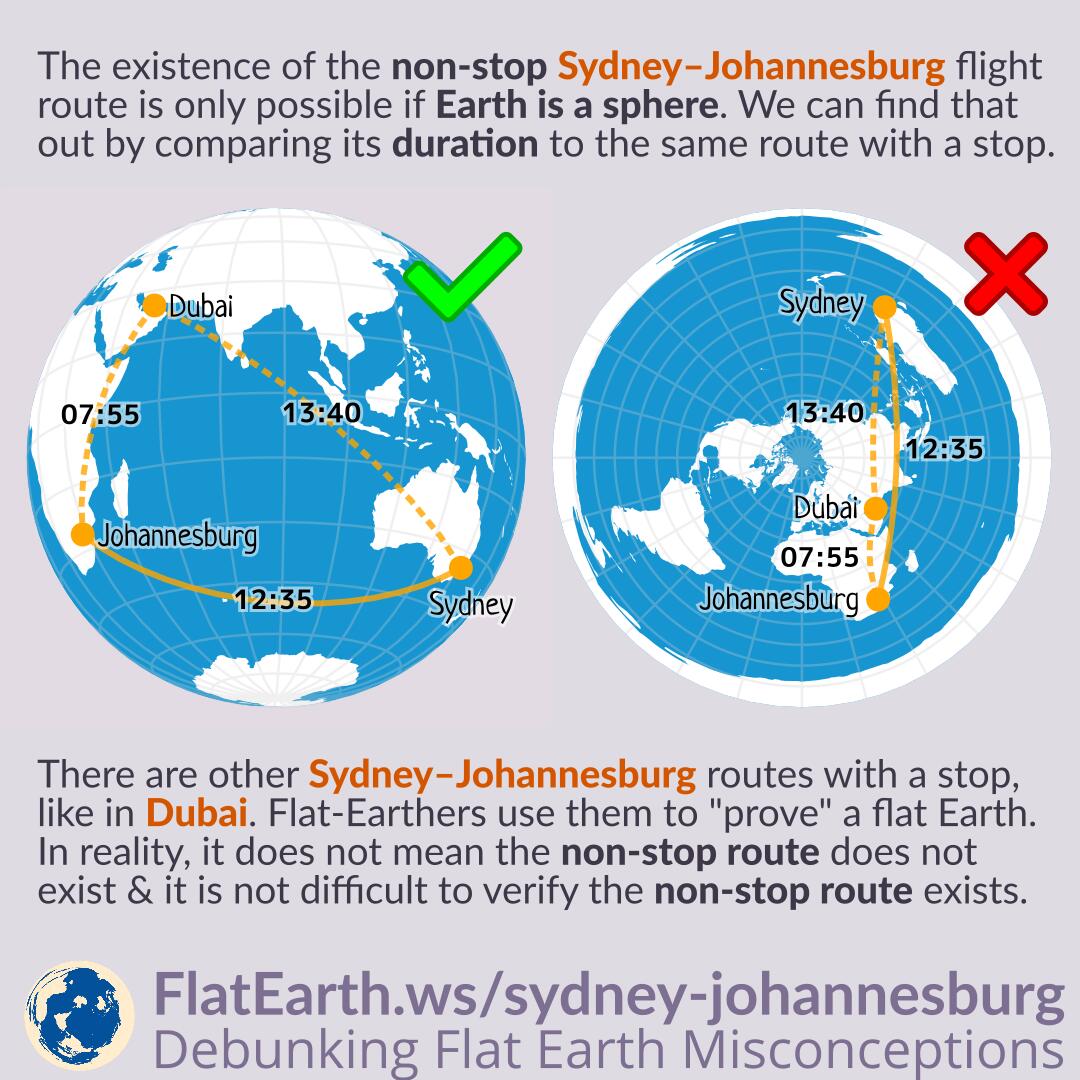There are many non-stop, long-haul flight routes between different continents in the southern hemisphere, without crossing the northern hemisphere. These routes are only possible if Earth is a sphere, and impossible if Earth is flat.
Flat-Earthers claim that all long-haul flights south of the Equator always do a stop north of the Equator. In reality, there are plenty of non-stop routes between these locations, showing that Earth is a sphere.
Continue reading “Non-Stop, Long-Haul Flight Routes in the Southern Hemisphere”








